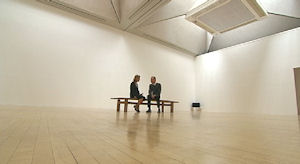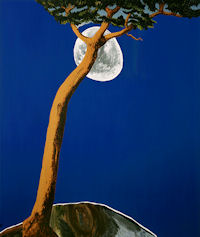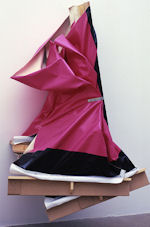Turner Prize nominations unveiled
A video installation, crumpled canvases and an empty room full of sound. Culture Editor Matthew Cain looks at the 2010 art nominees for the prestigious Turner Prize.
- Chapters
- descriptions off, selected
- subtitles off, selected
- captions settings, opens captions settings dialog
- captions off, selected
- en (Main), selected
This is a modal window.
This is a modal window. This modal can be closed by pressing the Escape key or activating the close button.

Lowlands is a sound installation by Susan Philipsz based on three different versions of a sixteenth century Scottish lament sung by the artist herself. It’s an immersive piece which works by exploring the relationship between sound and space.
Listening to it in the public gallery is an affecting and surprisingly intimate experience. Significantly, the nomination represents the first time an artist working with sound has ever been recognised by the Turner Prize.

Dexter Dalwood is a painter whose work pays direct reference to the history of art as well as individuals and events that have shaped Western culture and society. The twist here is that the protagonist or subject matter of the work is often absent, only revealed in the title of the painting.
But the work can be enjoyed on several different levels and doesn’t demand a detailed decoding by any kind of manual. Paintings shown in the Turner Prize exhibition explore subjects as diverse as the death of David Kelly and William Burroughs’ experiences in Tangiers.

The Otolith Group is comprised of real-life couple Kodwo Eshun and Anjalika Sagar, whose work is possibly the least accessible on the list, demanding a close and sustained reading before it’s fully understood and appreciated.
The Group’s aim is to encourage the viewer to re-consider accepted notions of truth and history. It achieves this by juxtaposing various different media – film, video, photography writings and discussion.

The work of Angela de la Cruz begins its creative journey as traditional monochrome painting. The artist then subjects these canvases to unusual and often violent distortions to create more sculptural work.
The result is art which often explicitly evokes the human form and calls into question the role of traditional art and what we expect of it. What’s less obvious on first sight is the humour of the work, alluding to the artist’s love of the slapstick comedy of Buster Keaton and Charlie Chaplin.